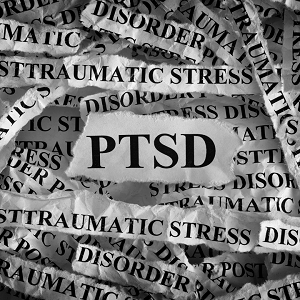Increasing Awareness of the Impact of PTSD in the Workplace
 By Bryon Bass
By Bryon Bass
SVP, Disability and Absence Practice & Compliance
Sedgwick
One of the most heartwarming commercials on air today features a veteran at an animal shelter surveying dogs available for adoption. While most of the dogs are playfully vying for attention, he notices one dog with soulful eyes, quietly resting in the corner. He learns the dog had a rough time before arriving at the shelter. The veteran and animal immediately connect, and the scene closes with the two kindred spirits driving down the highway in search of new beginnings.
The commercial spot does an excellent job portraying the impact of post-traumatic stress disorder (PTSD). Veterans returning from combat have frequently confronted the harsh realities and casualties of war. Although identified especially among veterans, PTSD is now a diagnosis in virtually all population groups.
PTSD is most commonly described as a mental disorder that can develop following a person witnessing or experiencing a traumatic event. The condition can lead to feelings of isolation and withdrawal from everyday activities. It can affect a person’s memory and negatively impact relationships with others. Normal sights and sounds can trigger an intense emotional response and mentally transport the person back to darker times. As more attention has turned toward the importance and value of holistic health, PTSD is becoming the focus of more workplace conversations.
Historically, first responders and medical personnel have been monitored and treated for PTSD symptoms. Police officers, firefighters, paramedics, and other first responders routinely come across scenes involving violence, wreckage along interstates and highways, or the horrific devastation of natural disasters or bombings. Medical professionals are also frequently confronted with life-or-death situations in rendering emergency care.
Beyond these high-risk groups, individuals in any profession may have been the victim of an assault, rape, or auto collision and experience flashbacks or anxiety in the workplace. Recent headlines of school shootings, convenience store robberies, and construction company fatalities underscore the need to address PTSD at the workplace on a much broader basis.
How can employers assist employees suffering PTSD, whether from occupational or nonoccupational sources, and how can they minimize and mitigate its impact on the workplace? First, employers should make mental health resources available as part of their benefits package and employee assistance program. This can include access to mental health professionals and behavioral specialists. PTSD can be hard to diagnose and may affect individuals differently, severely impacting a person’s productivity and posing added risk to the person, coworkers, and customers. It is important to offer assistance and provide help as soon as the need is recognized.
Second, employers can help increase awareness and understanding of PTSD in the workforce. Managers, supervisors, and employees need to know how PTSD might impact them and how to spot potential symptoms among coworkers. They need to know how to access resources and assistance in these instances.
Third, companies can educate workers about self-care techniques and ways to mitigate PTSD. These might include running and exercise, meditation and yoga, or use of therapy animals. Just as the condition manifests differently in individuals, the ways to relieve symptoms also vary.
PTSD warrants increasing awareness and attention. Elevate the conversation in your organization and offer assistance to those in need. Continue to promote the value of mental health resources in the workplace and eliminate stigma associated with mental health conditions. The good news is that effective PTSD treatments are available once the condition is identified.



